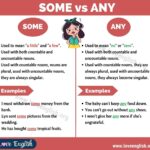Nature's Unsung Heroes: How Mushrooms and Rats Sustain Our Environment

Introduction: The Power of Hidden Contributors
When considering environmental stewardship, many people focus on trees, bees, or clean energy. Yet some of the most transformative agents for ecosystem health are often overlooked-mushrooms and rats. Understanding their contributions unveils new pathways for biodiversity, climate resilience, and sustainable resource management.
Mushrooms: Ecosystem Engineers and Climate Guardians
Decomposition and Nutrient Recycling
Mushrooms serve as nature’s recyclers. The visible cap is just the tip of the fungal iceberg; the extensive underground mycelium network breaks down dead organic matter, including leaves and wood. This process releases vital nutrients back into the soil, supporting plant growth and maintaining forest vitality. Without mushrooms, forests would be choked by undecomposed debris, stalling nutrient cycles and reducing biodiversity [4] .
For example, in temperate forests, mushrooms help convert fallen leaves into rich humus, which nourishes tree roots and supports a diversity of plant and microbial life. This decomposition supports the entire food web, from soil bacteria to mammals such as deer and squirrels that rely on robust vegetation [3] .
Carbon Sequestration: Combatting Climate Change
Through the action of mycelium, mushrooms trap and store carbon in soils, helping to mitigate climate change . Recent studies reveal that mycorrhizal fungi-a group forming symbiotic relationships with plant roots-may act as a global carbon sink, receiving billions of tons of carbon dioxide annually from plants. This temporary storage equates to a significant portion of CO2 emissions from fossil fuels [1] , [2] .

Source: magiadedonetzka.blogspot.com
Reforestation projects increasingly use fungi to help restore degraded land. By introducing mushroom spores into disturbed soils, practitioners can accelerate soil recovery, promote plant establishment, and lock away atmospheric carbon for decades [5] .
Pollution Cleanup and Environmental Restoration
Some fungi species are adept at breaking down persistent environmental toxins such as plastics, petroleum products, and pharmaceuticals. This process, known as mycoremediation , is being researched as a tool to clean contaminated soils and waterways. Fungi can also be used to control pests, acting as natural antagonists to harmful arthropods and nematodes [5] .
For practical implementation, organizations and individuals can support mycoremediation by participating in restoration projects or learning more through programs offered by local environmental agencies. Search “mycoremediation project” with your location to find opportunities, or contact your local conservation department for guidance.

Source: mimundomanualyartistico.blogspot.com
Sustainable Food and Waste Reduction
Mushrooms are a highly efficient, low-impact food source. Cultivation requires minimal water, land, and energy compared to livestock or many crops. Moreover, mushrooms can be grown on agricultural byproducts-such as coffee grounds, straw, and sawdust-reducing organic waste and diverting material from landfills [1] , [5] .
Individuals interested in sustainable mushroom farming can begin by contacting agricultural extensions, local horticultural societies, or searching “mushroom farming workshops” in their area.
Fostering Biodiversity
Mushrooms provide microhabitats for insects, rodents, and larger mammals. Their presence in a habitat supports a wide array of life forms, contributing to overall ecosystem resilience and diversity. Supporting mushroom populations-by avoiding overharvesting and maintaining forest cover-enhances this biodiversity [3] .
Rats: Controversial but Critical Environmental Players
Soil Aeration and Seed Dispersal
Though often maligned, rats (especially wild species) play an important role in soil health. Through their burrowing, rats aerate soil, improving water infiltration and root growth. Similar to squirrels, some rats collect and cache seeds, inadvertently aiding in plant propagation and forest regeneration.
For example, in grassland and woodland settings, native rat species can help distribute seeds of trees and shrubs, promoting plant diversity and ecosystem recovery after disturbances. If you’re engaged in habitat restoration, encouraging native rodent activity (while controlling invasive populations) can support soil and plant health.
Maintaining Food Webs and Supporting Predators
Rats are a food source for many predators, including birds of prey, snakes, and carnivorous mammals. Their abundance supports these higher trophic levels, contributing to balanced ecosystems. Removing rats entirely can disrupt these food webs, leading to unintended ecological consequences.
Wildlife managers seeking to maintain predator populations may monitor rat abundance as part of broader ecosystem health assessments.
Organic Waste Breakdown
Rats help recycle organic matter by consuming food scraps, plant material, and even small invertebrates. This scavenging contributes to nutrient cycling in urban and natural habitats. However, in heavily populated urban areas, rat populations can become problematic, so integrated pest management strategies are necessary to balance ecological benefits and public health.
Are Rats Good for the Environment?
The environmental value of rats depends on context. Native rat species often support ecosystem functions, but invasive rats (like the brown rat) can threaten native wildlife, damage crops, and spread disease. Managing rat populations requires careful consideration; conservationists typically focus on protecting native rodents while controlling invasive species to safeguard biodiversity.
For those seeking to manage rats sustainably, contact your local wildlife agency or department of agriculture for guidance on integrated pest management, native species protection, and habitat restoration techniques. Search “integrated pest management” or “native rodent conservation” for more details.
Accessing Resources and Participating in Solutions
Supporting Mushroom and Fungi Conservation
Individuals, businesses, and community groups can get involved by:
- Joining local conservation projects focused on reforestation and soil restoration. Contact your local conservation authority or forestry department for opportunities.
- Learning sustainable mushroom cultivation through agricultural extension offices, horticultural societies, or certified online courses.
- Advocating for the protection of wild mushroom habitats by supporting sustainable forestry and anti-deforestation initiatives.
You may also find resources from mycological societies or university extension services. For example, the American Mushroom Institute (verified) provides information on sustainable mushroom farming.
Engaging with Rat Management and Conservation
To ensure the environmental benefits of rats are realized while minimizing risks:
- Consult with your local wildlife or agricultural agency about best practices for rodent management.
- Support research and monitoring of native rodent populations through citizen science programs or conservation organizations.
- Implement integrated pest management strategies in urban and agricultural settings to balance ecological health and public safety.
For more information, search “wildlife management agency” and “rodent conservation” with your location, or contact state extension offices.
Key Takeaways and Next Steps
Mushrooms and rats exemplify the interconnectedness of ecosystem functions. Their roles in nutrient cycling, carbon sequestration, food webs, and habitat maintenance are essential for environmental health. By supporting responsible management and conservation of these organisms, individuals and organizations can contribute to a resilient and thriving planet.
References
- [1] R&R Cultivation (2025). How Mushrooms Can Help Clean Up Our Environment.
- [2] Real Mushrooms (2025). How Mushrooms Support Ecosystem Health and Biodiversity.
- [3] Shroomeats (2025). Mushrooms’ Essential Role in Ecosystems and Biodiversity.
- [4] Phys.org (2022). Mushrooms serve as ‘main character’ in most ecosystems.
- [5] UN Decade on Restoration (2021). Benefits of Fungi for the Environment and Humans.
- American Mushroom Institute (2025). Sustainable Mushroom Farming Resources.






